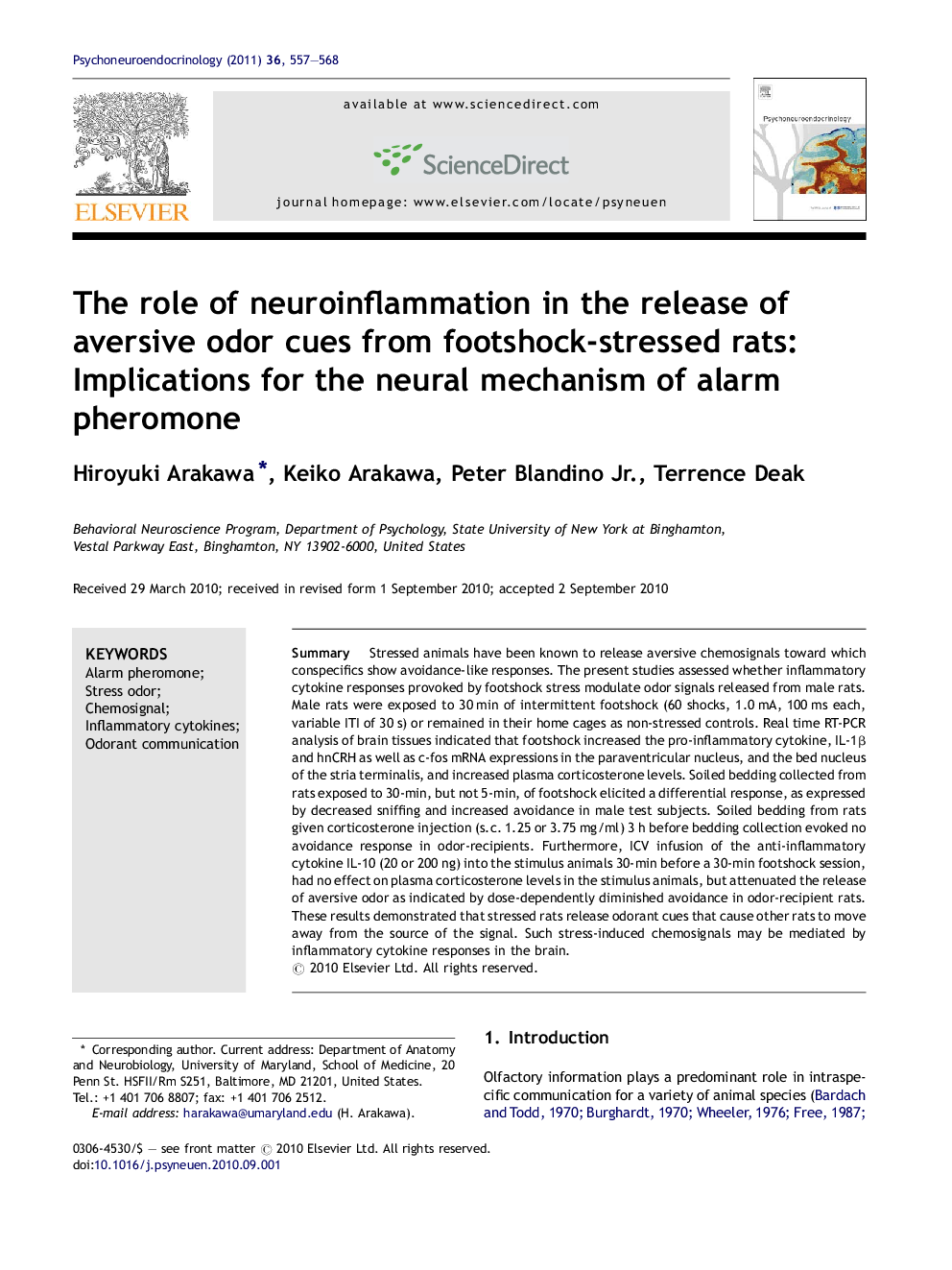| Article ID | Journal | Published Year | Pages | File Type |
|---|---|---|---|---|
| 337034 | Psychoneuroendocrinology | 2011 | 12 Pages |
SummaryStressed animals have been known to release aversive chemosignals toward which conspecifics show avoidance-like responses. The present studies assessed whether inflammatory cytokine responses provoked by footshock stress modulate odor signals released from male rats. Male rats were exposed to 30 min of intermittent footshock (60 shocks, 1.0 mA, 100 ms each, variable ITI of 30 s) or remained in their home cages as non-stressed controls. Real time RT-PCR analysis of brain tissues indicated that footshock increased the pro-inflammatory cytokine, IL-1β and hnCRH as well as c-fos mRNA expressions in the paraventricular nucleus, and the bed nucleus of the stria terminalis, and increased plasma corticosterone levels. Soiled bedding collected from rats exposed to 30-min, but not 5-min, of footshock elicited a differential response, as expressed by decreased sniffing and increased avoidance in male test subjects. Soiled bedding from rats given corticosterone injection (s.c. 1.25 or 3.75 mg/ml) 3 h before bedding collection evoked no avoidance response in odor-recipients. Furthermore, ICV infusion of the anti-inflammatory cytokine IL-10 (20 or 200 ng) into the stimulus animals 30-min before a 30-min footshock session, had no effect on plasma corticosterone levels in the stimulus animals, but attenuated the release of aversive odor as indicated by dose-dependently diminished avoidance in odor-recipient rats. These results demonstrated that stressed rats release odorant cues that cause other rats to move away from the source of the signal. Such stress-induced chemosignals may be mediated by inflammatory cytokine responses in the brain.
